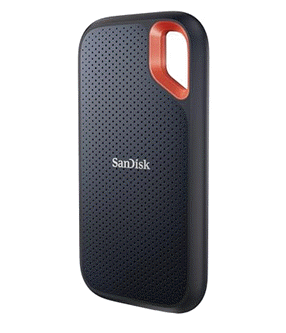2025-07-01 05:16:00
omeru.bearblog.dev
software used to be functional. now it’s personal. this is an essay about tools, taste, and the quiet ways we curate identity through what we launch.
intro
choosing software used to be straightforward. does the app do what you need, or not? but now, opening notion or obsidian feels less like launching software and more like putting on your favorite jacket. it says something about you. aligns you with a tribe, becomes part of your identity. software isn’t just functional anymore. it’s quietly turned into a lifestyle brand, a digital prosthetic we use to signal who we are, or who we wish we were.
there’s been a shift. not dramatic, but gradual. slow. quiet. like how one day you realize everyone around you stopped using chrome. somewhere along the way, software stopped being invisible. it started meaning things. your browser, your calendar, your to-do list, these are not just tools anymore. they are taste. alignment. self-expression.
suddenly your app stack said something about you. not in a loud, obvious way but like the kind of shoes you wear when you don’t want people to notice, but still want them to know. margiela replica. new balance 992. arcteryx. stuff that whispers instead of shouts, it’s all about signaling to the right people. you don’t want everyone to notice, just the ones whose opinion actually matter to you. maybe this isn’t an essay about software at all. maybe it’s about taste as self-construction. or function as aesthetic.
notion: the aesthetic workspace
staying with the fashion metaphor for a bit, our apps are like our outfits, our docks are our fit pics. curated, intentional, meant to be seen. maybe not by everyone, but by someone. that’s what made dockhunt so fascinating when it blew up like 2 years ago on twitter. it turned utility into exhibition, something private into a public moodboard. you weren’t just sharing what you use, you were showing who you are.
and what did we see when the docks came out? arc over chrome and safari. notion over notes and reminders. tools with personalities, tools that signaled intention.
and no tool owns that space better than notion. it’s not just a notes app, it’s a whole aesthetic.
calm, blank, modular.
the kind of calm that feels curated. everything’s clean, but not sterile. soft fonts, careful spacing, subtle off-white coloring, the tasteful thickness…
notion might be one of the most unopinionated tools out there. you can build practically anything with it. databases, journals, dashboards, even websites. but for a tool so open-ended, it’s surprisingly curated. only three fonts, ten colors. it’s like apple before they started chasing android. there was a time when iOS felt like intentional restraint. now, with iOS 18 letting you recolor every icon to match your wallpaper, i’ve seen home screens so hideous that i’d never associate them with apple at all.

this kind of restraint doesn’t happen by accident. it’s a mindset. a way of treating software like craft. the paint, the jackets, the “couldn’t find merch we love”. this is literally vibe-maxxing as company ethos. it shows how deeply they aestheticize every layer of the brand. they’re not just building a tool, they’re building a taste. a tone.
and it shows. the app reflects the company. or maybe the company reflects the app. either way, the branding isn’t loud. it’s soft-spoken and super curated. like who else talks about paint swatches and jackets when hitting 100 million users?
obsidian: the tinkerer’s lab
and then there’s obsidian.
same category. completely different energy.
if notion is a sleek apartment in seoul, obsidian is a cluttered home lab. markdown files. local folders. keyboard shortcuts. graph views. it doesn’t care how it looks, it cares that it works. it’s functional first, aesthetic maybe never. there’s no onboarding flow, no emoji illustrations, no soft gradients telling you everything’s going to be okay. just an empty vault and the quiet suggestion: you figure it out.
obsidian is built for tinkerers. not in the modern, drag and drop sense but in the old way. the “i wanna see how this thing works under the hood way”. it’s a tool that rewards curiosity and exploration. everything in obsidian feels like it was made by someone who didn’t just want to take notes, they wanted to build the system that takes notes. it’s messy, it’s endless, and that’s the point. it’s a playground for people who believe that the best tools are the ones you shape yourself.
notion is for people who want a beautiful space to live in, obsidian is for people who want to wire the whole building from scratch. both offer freedom, but one is curated and the other is raw.
obsidian and notion don’t just attract different users.
they attract different lifestyles.
simulacra of openness
notion is collaborative, aesthetic, made to be shared. it leans soft. social.
obsidian is solitary recursive, private. it leans hard. technical.
one rewards presentation, the other rewards configuration. it’s easy to guess which one shows up more on pinterest and which one gets compared to vim.
sharing plugins, writing css snippets, publishing vault setups like dotfiles. the whole obsidian ecosystem runs on a kind of quiet technical fluency.
obsidian feels like 4chan to notion’s reddit. it’s thinkpad to notion’s macbook.
it feels so arch linux-coded that people are shocked to learn it’s not open source. it really feels like it should be, the community talks like it is. this tweet from theo actually what triggered the whole essay. i knew i wanted to write about software companies as lifestyle brands, but this was the clearest example yet: vibes over facts.
the fact that people think obsidian is open source matters more than whether it actually is. because open source, in this context, isn’t just a licence, it’s a vibe. it signals independence. self-reliance. a kind of technical purity. using obsidian says: i care about local files. i care about control. i care enough to make things harder on myself. and that is a lifestyle.
it’s the same way people treat thinkpads, or vim, or mechanical keyboards with obscure key layouts. none of them are open source in the legal sense, but they feel open. tinkerable. resistant to the defaults. and that feeling creates the brand. perceived openness becomes a kind of cultural capital. obsidian didn’t sell the lifestyle. it just left enough space for people to build it themselves.
tasteware
none of this is really about note taking. it’s about taste, identity, and the quiet ways we signal who we are through our tools. it just happens that notes are where the contrast shows up most clearly.
but it’s everywhere now. in browsers, in email clients, in calendars, even in search engines. we’re not just picking tools anymore. we’re curating them. not just for what they do, but for what they say.
now, there’s a “premium” version of everything. superhuman for email. cron (i don’t wanna call it notion calendar) for calendars. arc for browsing. raycast for spotlight. even perplexity, somehow, for search.
these apps aren’t solving new problems. they’re solving old ones with better fonts. tighter animations, cleaner onboarding. they’re selling taste. they’re selling time. and people buy in, not just because the tools are better (some of them aren’t), but because they feel like tools made for people who care.
it’s the same move you see in fashion. the aesop soap. the patagonia fleece. the rimowa carry-on. nothing flashy, nothing loud. just clean, expensive looking restraint. the kind of product that whispers.
these apps are doing the same thing. arc isn’t just a browser, it’s a statement. chrome gets the job done, but arc gets you. the onboarding feels like a guided meditation. it’s not about speed or performance. it’s about posture. taste. the idea that how you use your computer should look and feel as considered as how you dress.
arc makes you learn new gestures. it hides familiar things. it’s not trying to be invisible, it wants to be felt. same with linear. same with superhuman. these apps add friction on purpose. like doc martens or raw denim that needs breaking in. you suffer a little. but in that suffering, you build attachment. suddenly it’s not just an app, it’s yours.
tools with mutuals
and once enough people start caring about their tools like that, it stops being personal. it becomes cultural. taste starts to repeat itself. a certain kind of app starts showing up in all the same places. linear even has a “work with linear” page, a curated list of companies that use their tool. it’s a perfect example of companies not just acknowledging their lifestyle brand status, but actively leaning into it as a recruiting and signaling mechanism.
it’s no longer just about functionality, it’s about as an ecosystem of taste. linear knows its design is aspirational, so it turns that into a cultural filter. it’s not “those companies use linear”, it’s “these are the kind of people who use linear.”
it’s software as aesthetic passport. it’s a vibe directory. a design-forward who’s who. and of course, arc is on there. so is superhuman. so is raycast. so is perplexity. the stack signals itself. real recognize real.
the medium is the message
so why are we seeking identity in our digital toolkits? maybe because we live inside them now. these apps are our desks, our notebooks, our mirrors. they shape how we think, how we plan, how we remember. of course we want them to feel right. of course we want them to say something.

people don’t just use these apps. they use them to imagine themselves differently. more organized. more intentional. more in control. apps like superhuman or linear aren’t just tools, they’re lifestyle upgrades. software that feels like a reward. a signal that you care about your time, your taste.
aesop isn’t just soap. notion isn’t just notes. they’re elements in your identity collage.
and the companies? they’ve caught on. they don’t just ship features anymore, they ship vibes. onboarding becomes a performance. the ui is the brand. the founder’s blog post is the manifesto.
it’s not about what the software does.it’s about who it’s made for.
the medium is the message. and now the message is: this is who i am. or at least who i’m trying to be.
Keep your files stored safely and securely with the SanDisk 2TB Extreme Portable SSD. With over 69,505 ratings and an impressive 4.6 out of 5 stars, this product has been purchased over 8K+ times in the past month. At only $129.99, this Amazon’s Choice product is a must-have for secure file storage.
Help keep private content private with the included password protection featuring 256-bit AES hardware encryption. Order now for just $129.99 on Amazon!
Help Power Techcratic’s Future – Scan To Support
If Techcratic’s content and insights have helped you, consider giving back by supporting the platform with crypto. Every contribution makes a difference, whether it’s for high-quality content, server maintenance, or future updates. Techcratic is constantly evolving, and your support helps drive that progress.
As a solo operator who wears all the hats, creating content, managing the tech, and running the site, your support allows me to stay focused on delivering valuable resources. Your support keeps everything running smoothly and enables me to continue creating the content you love. I’m deeply grateful for your support, it truly means the world to me! Thank you!
|
BITCOIN
bc1qlszw7elx2qahjwvaryh0tkgg8y68enw30gpvge Scan the QR code with your crypto wallet app |
|
DOGECOIN
D64GwvvYQxFXYyan3oQCrmWfidf6T3JpBA Scan the QR code with your crypto wallet app |
|
ETHEREUM
0xe9BC980DF3d985730dA827996B43E4A62CCBAA7a Scan the QR code with your crypto wallet app |
Please read the Privacy and Security Disclaimer on how Techcratic handles your support.
Disclaimer: As an Amazon Associate, Techcratic may earn from qualifying purchases.






































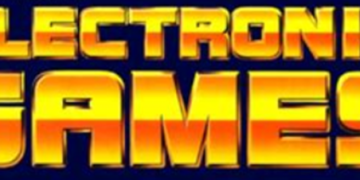
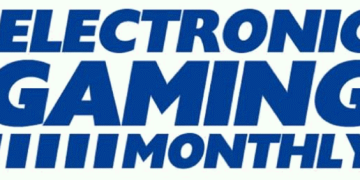
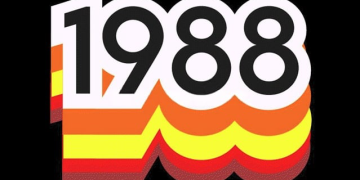

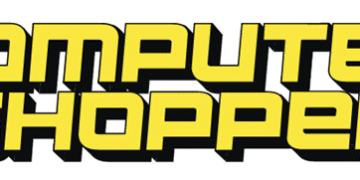
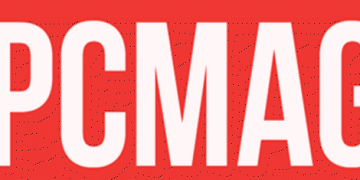
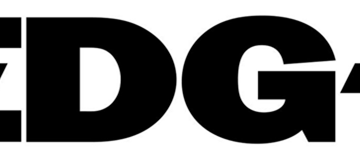







![[Download] Intuitive 3D Modeling | Abstract Sculpture | FLIGHT | DANA KRYSTLE](https://techcratic.com/wp-content/uploads/2025/08/1755630966_maxresdefault-360x180.jpg)





































